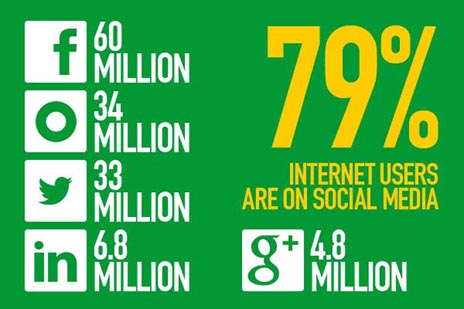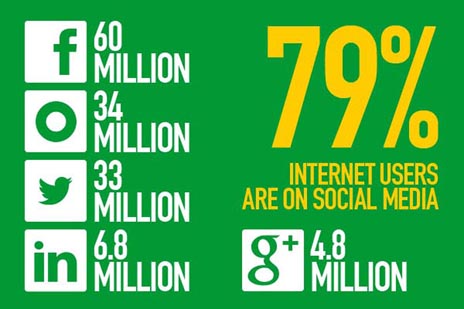
Latin Flair: Brazil Internet Habits Infographic

Our latest infographic shows the most recent stats and trends from the region.
As recently as eight years ago in Brazil, access to the internet belonged very much to the upper middle class and the wealthy. The majority of the population did not have a computer in their home, nor a laptop. Electronics have historically been prohibitively expensive in Brazil due to high import costs and inflation. Even those who had access to the internet were not necessarily on social media, and those who were had profiles exclusively on Orkut, Google's first attempt at a social media platform. Today there are 88 million users and counting. They make up 10.6% of world internet users and 44% of Brazil's population. By 2016 this is estimated to grow to 56% - over 12% growth in two short years. What drives this internet growth? It's partly down to Brazil's recent economic boom, which has caused the middle class to expand significantly. The average Brazilian now has more spending power, and can therefore afford internet access. It's also down to an increase in the use of smartphones and tablets. With growth like this, why aren't more companies jumping on the Brazil bandwagon? For starters, there's the language barrier. Another reason is Brazil's bureaucratic jungle. However, with e-commerce websites and internet businesses thriving, Brazil provides a wealth of possibilities for the digital entrepreneur. Two of the most striking aspects of Brazil are:- Brazil (along with Australia) is the world's top social media user. 79% of internet users in the country are on social media.
- Daily use of mobiles in Brazil is 17 minutes longer than the world average.
UNTAPPED POTENTIAL – SMARTPHONES
While smartphone penetration per % population is lower than other countries at 18%, the average daily time use of mobiles is 59 minutes. Brazilians primarily use their smartphones to find local information, which makes mobile marketing a growing source of potential for businesses. Make your website mobile-responsive or invest in developing an app.BRAZILIAN BUYING POWER
Online shopping is one of the primary ways Brazilians use the internet, and they are spending billions online every year, and are predicted to spend 26.9 billion by 2015. The most popular online purchases include books, DVDs, mobile phones, computer products and trainers.Brazil has 60 million Facebook users and only 34 million Orkut users
MOST SOCIAL PEOPLE ON EARTH
Given that the average Brazilian internet user is likely to be between the ages of 16-24, it's no wonder that 79% of internet users are on social media. Up until 2011, the main social media platform was Orkut, Google's first attempt to rival Friendster. After Google launched it in Portuguese, Orkut became extremely popular in Brazil, though perhaps to the detriment of many a relationship. Today, Brazil has 60 million Facebook users and only 34 million Orkut users, although many Brazilians have kept profiles on both. YouTube is the 4th most popular website in Brazil, with 79% of Brazilian internet users visiting daily. Brazil is also an international powerhouse on Twitter, with 33 million users, well behind the USA's 107 million users, but edging out Japan’s 30%. It is widely used by journalists to push out stories, and has contributed to the organisation and mobilisation of recent protests in the country.CREATE A MARKETING STRATEGY FOR BRAZIL
It's important to create an individual strategy for Brazil, and not lump it in with a "Latin America" strategy. Ideally you should drill down to regional level, as Brazilian culture is extremely diverse – what works in São Paulo may tank in Recife.- Language - Implement your strategy in Brazilian Portuguese. While many Brazilians speak English, the language used in the workplace, and online, is Portuguese.
- Mobile – consider investing in mobile marketing early as it is expected to grow considerably. A mobile/responsive design or app will ensure locals have your information on hand.
- Get social – with so many Brazilians on Facebook and Twitter, make sure you have a comprehensive social media strategy. Integrate it with your content marketing and PR to create even better brand awareness.